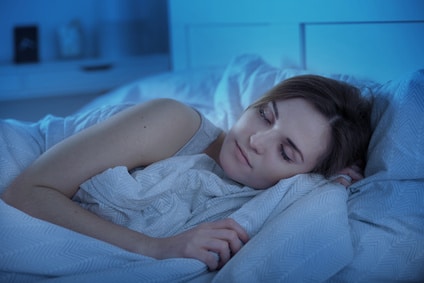📚How Technology Can Be Used to Optimize Sleep
This post is the winning essay for our 2017 Scholarship by Mason Lovell of The Ohio State University.

When they can get one, everyone enjoys a night of peaceful, restful sleep. Even more so, everyone enjoys complaining about their inability to experience such a night. There are a million reasons why so many people nowadays struggle to get the sleep they need, and there are literally millions of people experiencing such issues. In 2014, The National Sleep Foundation found that over a third (35%) of Americans consider their daily sleep quality either “Poor” or “Only fair,” and only 12% would say that they experience “Excellent” sleep quality. Different factors contribute to this seemingly nation-wide dilemma: We work a lot, and live in a society filled with distractions. The most frequent distractions, however, are the electronic ones that populate every part of our lives. These devices negatively affect our sleep in many ways, but their most vicious effect by far on human sleep quality lies in a simple trick they play on our brains. In short, while there have been great strides made in the technology realm recently to help people sleep – including white noise emitters, noise-cancelling headphones, high-tech night lights, and sleep-monitoring mattresses – the most effective way we can use technology to optimize our sleep is to simply stay away from it before we go to bed.
It is fairly well known nowadays that the quality of one’s sleep is highly affected if the individual views a digital screen directly before going to bed. The science behind that statement, however, is less known. It is fairly simple: The pineal gland, a small part of the endocrine system in our brains, has one function – to produce melatonin. Melatonin is the hormone in our bodies that regulates sleep patterns. The more melatonin you have in your system, the more inclined you are to fall asleep. And the signal for the pineal gland to begin producing melatonin is the absence of light – blue light in particular. One would assume that a long time ago, in a more primitive, non-electric age, it was very easy for the body to regulate sleep – when it got dark outside, your system began to ease you into sleep, and when the sun began to rise, the opposite occurred. Now, the ease of such regulation has changed completely. The issue that electronic screens present is exactly what you see when you look at them – tons of blue light.
This blue light tricks our brains into thinking that it is still daytime. So when you’re taking one last stroll down your Facebook timeline before bed, instead of beginning to pump melatonin through your body to help you sleep, your body does nothing. You take longer to get to sleep, and often will experience less refreshing sleep. Teenagers, the generation that already spends the most time looking at screens, are affected even more so than their older counterparts. Renssalaer Polytechnic Institute conducted a study with teenagers and adults, comparing their melatonin levels before bedtime with, and without, blue light exposure. After two hours, adults reported an average of 14% less melatonin in their system when they had been exposed to blue light compared to two hours without such exposure. In the same circumstances, the teenage group saw an average drop in melatonin levels of 38%.
Several tools have arisen to combat the presence of blue light in our night lives, including one used in the RPI study mentioned above: Amber, or orange, lenses. These glasses block the blue light from entering the human eye, thus preventing the pineal gland from being confused. Similar products, such as protective phone screen filters that can be placed directly on the phone screen, have been marketed as well. And curiously enough, such technology would be suitable material to be endorsed in this essay. But in my opinion, and I would hope in the opinions of most Americans, these tools are completely unnecessary. Unnecessary, that is, if one makes the conscious, willful decision to stay away from phone, television, and computer screens in the hours preceding bedtime. It’s not an easy habit to develop, but it serves your health and wellbeing in the long run, it doesn’t include the inconvenience of having to wear a pair of awkward, orange lenses, and it’ll save you the $20-$100 you could have spent on any manner of light-filtering technology mentioned above.
My proposition, granted, does not give a traditional answer to the question of sleep optimization through technology. It does, however, provide the purest form of encouraging healthy sleep habits – staying away from the light rays that mess with our systems enough throughout our days as it is. Technology comes in many forms, lots of which are very powerful, useful tools for making our lives more enjoyable and efficient; its use after dark is not one of those helpful forms. There are enough distractions in our modern world to keep you from getting a good night of sleep already. Keeping technology out of the bedroom and out of the hours prior to sleep is one step towards both minimizing those distractions and maximizing your quality of sleep.
If you enjoyed our article please check out help with review writing.





